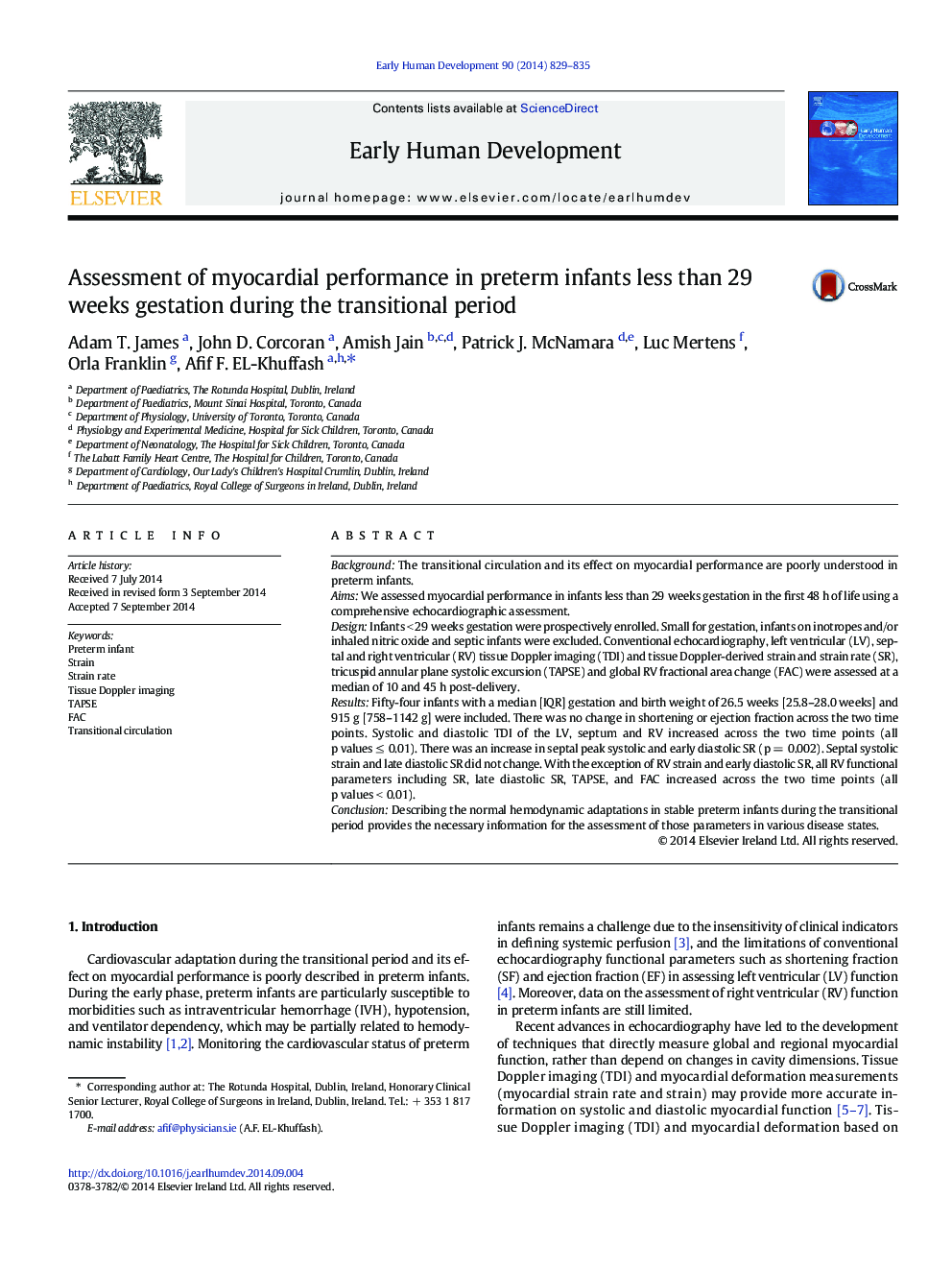| Article ID | Journal | Published Year | Pages | File Type |
|---|---|---|---|---|
| 6171817 | Early Human Development | 2014 | 7 Pages |
â¢Left and right ventricular strain and strain rate are measurable in preterm infants.â¢Right ventricular-specific function parameters are reliable in preterm infants.â¢Conventional echo function markers do not detect a change in the first 48 h.â¢Novel echo markers of function demonstrate improvement over the first 48 h.â¢Those novel markers may be more sensitive in detecting compromise in disease states.
BackgroundThe transitional circulation and its effect on myocardial performance are poorly understood in preterm infants.AimsWe assessed myocardial performance in infants less than 29 weeks gestation in the first 48 h of life using a comprehensive echocardiographic assessment.DesignInfants < 29 weeks gestation were prospectively enrolled. Small for gestation, infants on inotropes and/or inhaled nitric oxide and septic infants were excluded. Conventional echocardiography, left ventricular (LV), septal and right ventricular (RV) tissue Doppler imaging (TDI) and tissue Doppler-derived strain and strain rate (SR), tricuspid annular plane systolic excursion (TAPSE) and global RV fractional area change (FAC) were assessed at a median of 10 and 45 h post-delivery.ResultsFifty-four infants with a median [IQR] gestation and birth weight of 26.5 weeks [25.8-28.0 weeks] and 915 g [758-1142 g] were included. There was no change in shortening or ejection fraction across the two time points. Systolic and diastolic TDI of the LV, septum and RV increased across the two time points (all p values â¤Â 0.01). There was an increase in septal peak systolic and early diastolic SR (p = 0.002). Septal systolic strain and late diastolic SR did not change. With the exception of RV strain and early diastolic SR, all RV functional parameters including SR, late diastolic SR, TAPSE, and FAC increased across the two time points (all p values < 0.01).ConclusionDescribing the normal hemodynamic adaptations in stable preterm infants during the transitional period provides the necessary information for the assessment of those parameters in various disease states.
